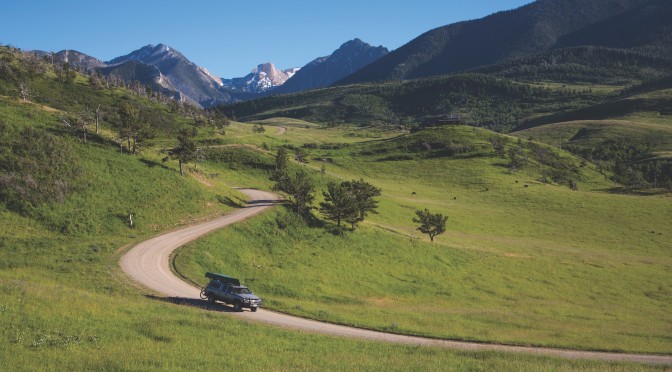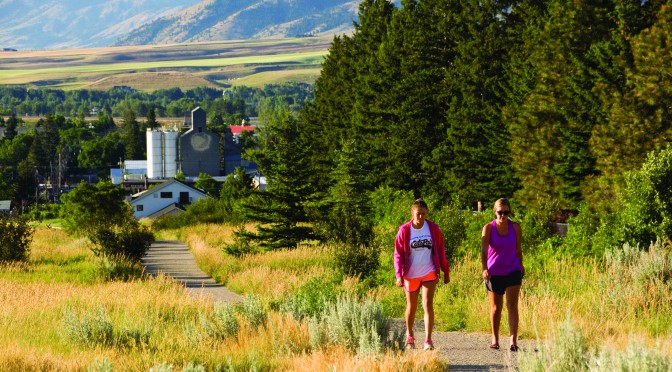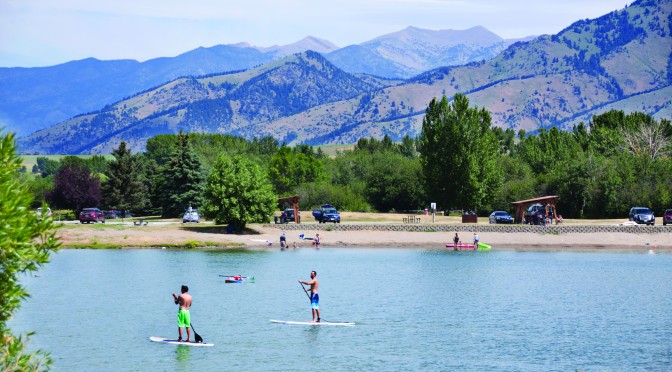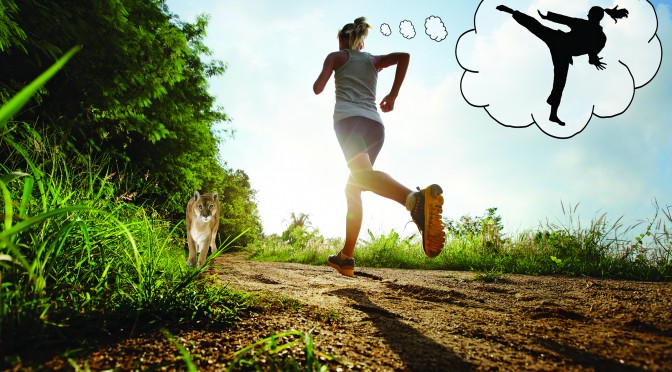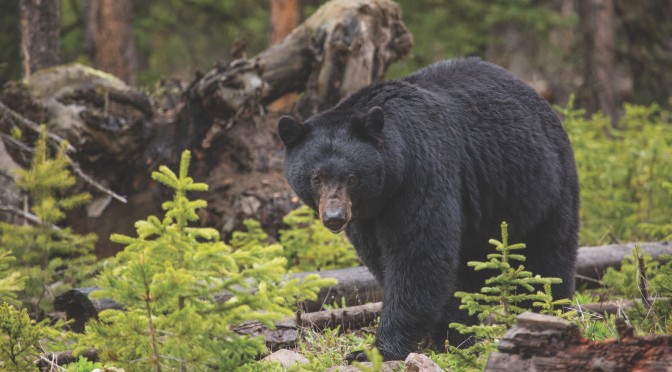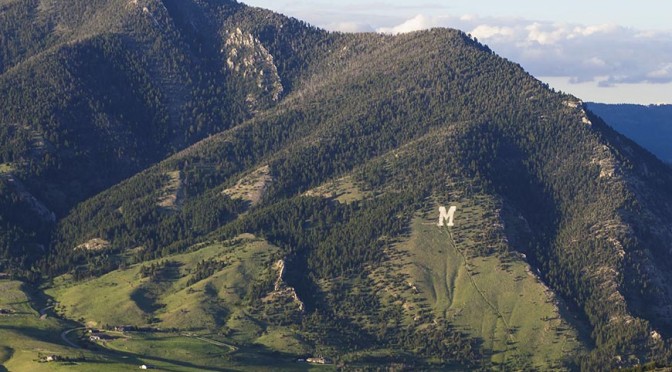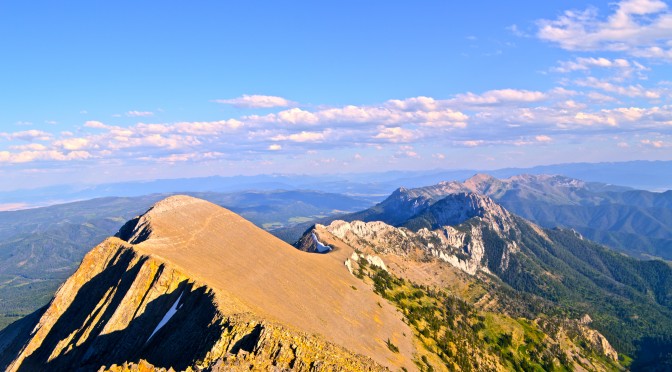by the editors
Some suggestions this road trip season.
Road-trips are a quintessential college experience: plan the route, gather the crew, pack the rig, and hit the highway. While most big trips are reserved for the freedom of summer, Montana is full of weekend escapes for every season.
Fall
After settling in for the semester, plan a circumnavigation of the Madison Range. Leaving campus Friday afternoon, your first stop should be a campsite in Gallatin Canyon, along Storm Castle Creek. There’s a Forest Service campground with several spots, but push past it and set up further upstream. If you bike, spend the evening pedaling the dirt road up the burned-out drainage. Prefer hiking? Backtrack to the Storm Castle trailhead and make your way up this Bozeman-area classic.
Back at camp, cook something hot and hearty; you’ll need the energy and by this time of year, evening temps can dip below freezing. Build a roaring fire and pass the hot cocoa to the left-hand side.

Odds are, a cold morning will have you up early. After cooking eggs and bacon over an open fire, and mixing up some cowboy coffee, head south toward Big Sky. Climbers should stop at Gallatin Tower right along the river, or head across the river and climb the Waltz. Anglers will be relieved to see that the tourist hordes of summer have largely dissipated. The Gallatin is once again a locals’ playground.
If you bike, head for the Porcupine trailhead, just south of Big Sky. There are a few several-mile loops you can put together, but keep it short and sweet as lunch will be calling. If you’ve dawdled, hit up the Gallatin Riverhouse Grill. They don’t open until 3pm, but their ribs are worth waiting for. If it’s earlier in the day (and hopefully it is), backtrack to Sola’s Big Sky location for sandwiches and salads. If you can stand it, book it to West Yellowstone and lunch there. After eating, stop in at Freeheel and Wheel for a coffee before getting back on the road.
It’ll be late afternoon at this point, so head west past Hebgen Lake and find a spot at the Beaver Creek campground, or along any Forest Service road at a dispersed site. Beaver Creek boasts impressive aspen groves, and by this time of year, they’ll be bright yellow or blaze orange. Plus there’s the added benefit of camping on Quake Lake, which is full of trout.
In the morning, make haste for Ennis, about 45 miles north on Hwy. 287. Grab breakfast in town before picking a trail to hike. There are lots of options on the west side of the Madison Range, but this is serious griz country, so have your bear spray handy. After exhausting yourself with a strenuous foray into the wilderness, a soak at Norris Hot Springs is a welcome reward. Once adequately loosened up, it’s just a short hour drive back to Bozeman.
Winter
A winter road-trip is a great way to keep things interesting during the monotony of Bozeman’s longest season, and Red Lodge is the ideal destination.
For one, it’s relatively close. Leaving campus on Friday afternoon, you can pull into town before nightfall. Book a room at the Yodeler Motel for some classic ski-town décor, then walk downtown to Foster & Logan’s for some hearty pub fare. Don’t overdo it, as you’ll want to rise early for a full ski day at Red Lodge Mountain. On good snow years, there’s interesting terrain for all skill levels. When Mother Nature isn’t cooperating, embrace the local ski-hill vibe and the steep, long groomers.
Once you’ve gotten your vertical fill, check out Mas Taco on Main Street. Pick and choose from their extensive taco menu, or fill up on their burrito special. Pass the evening soaking in the Yodeler’s hot tub.
In the morning, make the rounds at the Red Lodge Nordic Center. They groom trails for skiers of all abilities and rentals are available in town at the Sylvan Peak Mountain Shoppe. On your way out of town, grab an early lunch at Café Regis. If it’s later in the day, take the long way home, making a pit stop in Roscoe at the Grizzly Bar. Think meat and lots of it. After gorging yourself, cruise to the interstate for the straight-shot drive back to Bozeman.
Spring
By the time spring rolls around, most Bozemanites are itching to ditch the snow for some desert sun. While we can’t blame them, we’re satisfied with the Treasure State’s outdoor offerings, and you will be too.
Instead of driving ten hours to Moab, head west on the interstate for 30 minutes toward Three Forks. If you bike, stop at Copper City a few miles north on Hwy. 287. If you climb, continue on to Pipestone, where the Queen and King crags await. This is also a great place for early-season camping, as the ground dries out before most mountain sites. There are dozens of trails for motorized and non-motorized users alike.
Pipestone can handle bigger crowds, so make a party of it, making sure to clean up after yourselves. Bring the grill, as much meat as you can possibly eat, and all the car-camping luxuries you can think of.
You’ll likely sleep in Saturday morning, and that’s okay—your next stop isn’t far. Hop on I-90 and head west into Butte. If you’re already in need of some lunch, stop at Metals Sports Bar & Grill for massive burgers. Well-fueled, push north on I-15 to Helena. This is Montana’s mountain-biking mecca. There are miles of trail that tend to dry out early, and many end at Blackfoot Brewing. If you aren’t 21, fret not—the Capital City has other excellent food-and-drink options. Also, non-bikers shouldn’t be discouraged from using Helena’s trails; they’re great for trail running and early-season wildflower viewing as well.
Like most Montana cities, Helena is surrounded by public land. Head up any Forest Service or Bureau of Land Management road to find a campsite. If you prefer having a picnic table and a fire ring, book campground sites ahead of time here.
In the morning, take Hwy. 287 south to Townsend, making sure to stop for some fishing on the Missouri River or canoeing on Canyon Ferry Reservoir. This time of year, waterfowl abound and this a great place for watching them in their element. Lunch at the Full Belli Deli is highly encouraged—their sandwiches are fantastic, and you can pick up a bag of jerky for snacking on later.
Continue south along Hwy. 287 until you make it back to Three Forks—but before making haste for Bozeman, check out Missouri Headwaters State Park. Here, the Jefferson, Madison, and Gallatin rivers converge to form the Mighty Mo. The park has trails and interpretive signs with historical information, and the river-bottom cottonwood groves provide cover for moose, deer, and other critters.
Cap the weekend off with steak fingers at Sir Scott’s Oasis in Manhattan before rolling back to campus.
For more road-trip ideas and summer options, check out Outside Bozeman’s weekender guide.

